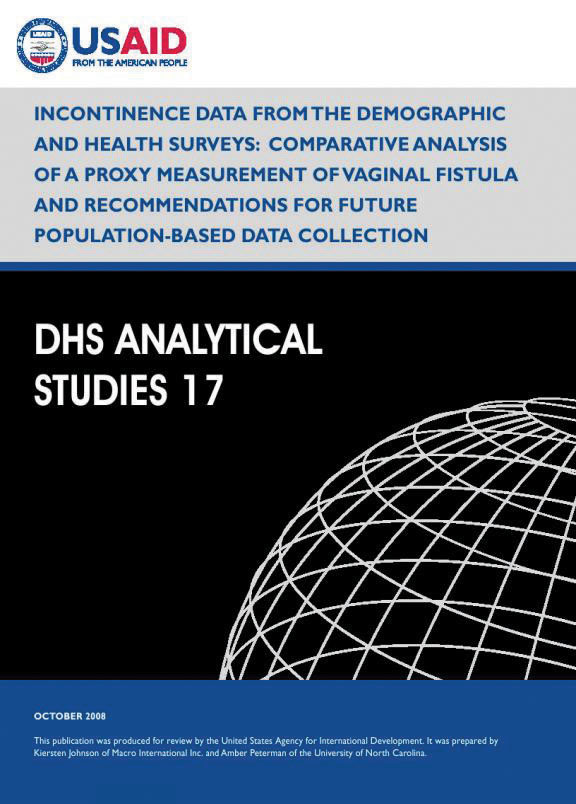- PUBLICATIONS
- JOURNAL ARTICLES
- ACCESS PUBLICATIONS
Publications Summary
- Document Type
- Analytical Studies
- Language
- English
- Recommended Citation
- Johnson, Kiersten, and Amber Peterman. 2008. Incontinence Data from the Demographic and Health Surveys: Comparative Analysis of a Proxy Measurement of Vaginal Fistula and Recommendations for Future Population-Based Data Collection. DHS Analytical Studies No. 17. Calverton, Maryland, USA: Macro International
- Download Citation
- RIS format / Text format / Endnote format
- Publication Date
- November 2008
- Publication ID
- AS17
Download
 Incontinence Data from the Demographic and Health Surveys: Comparative Analysis of a Proxy Measurement of Vaginal Fistula and Recommendations for Future Population-Based Data Collection (PDF, 436K)
Incontinence Data from the Demographic and Health Surveys: Comparative Analysis of a Proxy Measurement of Vaginal Fistula and Recommendations for Future Population-Based Data Collection (PDF, 436K)
Supplement:
 Comparative Analysis of a Proxy Measurement of Vaginal Fistula: Supplement to DHS Analytical Studies No. 17 (PDF, 586K)
Comparative Analysis of a Proxy Measurement of Vaginal Fistula: Supplement to DHS Analytical Studies No. 17 (PDF, 586K)
Download this publication
Supplement:
